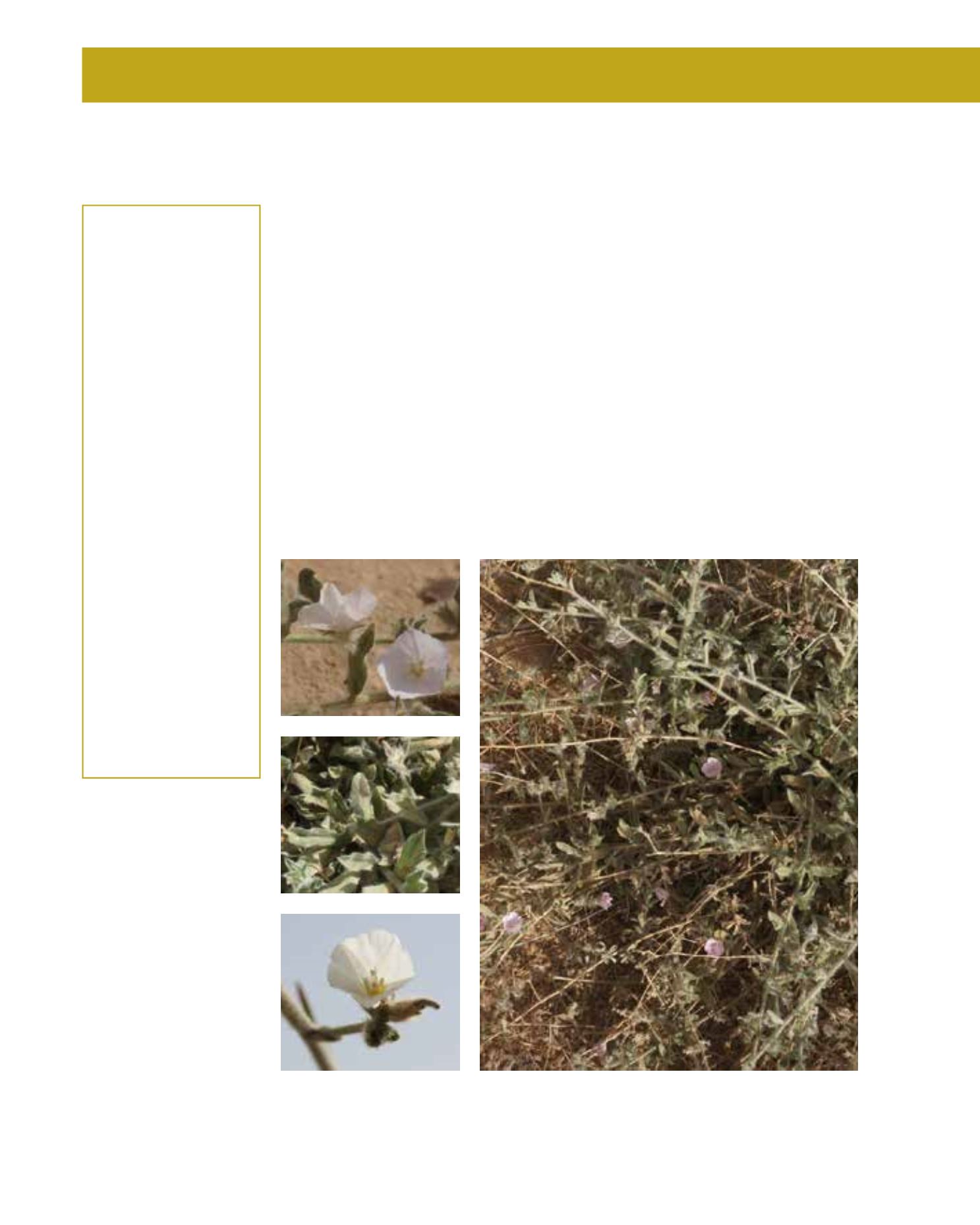

GENERAL
Origin
:
arid,
Mediterranean,
sub-tropical
Vigour
:
slow-growing
Humidity
:
very arid, semi-
arid, semi-humid
Propagation :
direct sowing,
sowing and
pricking out,
cuttings
Maintenance :
low
CONDITIONS
Urban climate :
resistant
Dessication :
resistant
Stagnant water :
vulnerable
Irrigation
:
none
Salinity/ppm :
very high (7000
ppm)
Hardiness
:
-6°C
SHAPE
Type
:
sub-shrub,
perennial
Height
:
0.1 m-0.3 m
Spread
:
0.4 m-0.6 m
Foliage
:
semi-evergreen
FLOWER
Colour
:
pastel white, pale
pink
Size
:
1 cm - 2 cm
Period
:
January - April
FRUIT
Type of fruit :
capsule
Fruit size
:
0.3 cm
The Prostrate Bindweed is originated in Egypt, native on the Arabian Peninsula and distributed
as well in Pakistan and North India. Close to Riyadh it can be found in the Thumamah Nature
Park in dry and sandy soils of open Rowadhs plains. It can be used as fodder for livestock. In
former times it was also used as remedy. The Prostrate Bindweed is growing like a sub-shrub with
a height of 10 to 30 cm with a woody base but it is prostrating as well, but not too far, 40 to 60
cm. It can be used as groundcover in grouped or massed-planting. This perennial herb flowers in
winter. From January to April appear white to pale-pink flowers in a small trumpet shape. The
foliage is perfectly adapted to desert conditions with its tomentose to pubescent protection on
branches and leaves. The shape of leaves is lanceolate, 1 to 3 cm long and 0.6 cm broad. With its
silvery look and the pretty flowers the Bindweed brings interesting aspects in plant displays. The
plants are recommendable in Wadi farm gardens, they produce nice scenery in rock and steppe
gardens and they are perfect for extensive green and especially for desert restoration projects. The
maintenance requirements are low, only in the beginning after planting irrigation is required un-
til they are established, the irrigation can be reduced to none, but little water (5 to 10 mm per day)
can certainly extend the fresh look of the herb. Propagation can be done by seeds or by cuttings.
117
Convolvulus prostratus,
Convolvulaceae
Bindweed,
Oleik, Rukhami, Muded
















